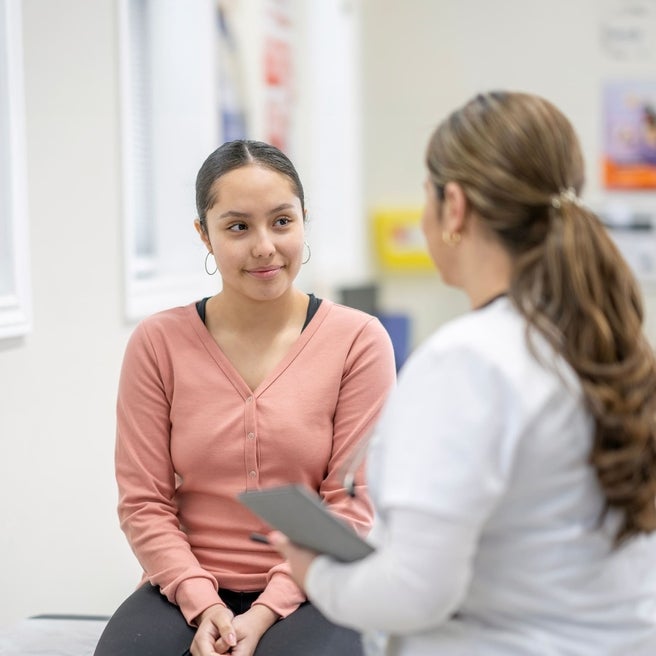Adolescence can be a confusing time for young people as their bodies begin to change and they become young adults. Ovulation and menstruation are normal parts of puberty, and by better understanding what is typical, you or your child can know when to seek help for any abnormal menstrual conditions. See common menstrual complaints.
Ovulation
When a young person reaches puberty, they begin to ovulate — a process in which a mature egg cell (also called an ovum) that is ready for fertilization by a sperm cell is released from one of the ovaries (two reproductive organs located in the pelvis).
If the egg is fertilized by a sperm cell as it travels down the fallopian tube, pregnancy occurs. The fertilized egg then becomes attached to the lining of the uterus until the placenta (an organ, shaped like a flat cake, that only grows during pregnancy and provides a metabolic interchange between the fetus and pregnant person) develops.
If the egg does not become fertilized as it travels down the fallopian tube on its way to the uterus, the endometrium (lining of the uterus) is shed and passes through the vagina (the passageway through which fluid passes out of the body during menstrual periods, also called the birth canal), a process called menstruation.
As the average menstrual cycle in adults lasts 28 days (starting with the first day of one period and ending with the first day of the next menstrual period), most people ovulate on day 14. At this time, some people experience pain or discomfort in their lower abdomen, spotting, or bleeding, while others do not experience any symptoms at all.
A person is generally most fertile (able to become pregnant) a few days before, during, and after ovulation.
Menstruation
Menstruation is one part of a person's menstrual cycle which includes the shedding of the endometrium (lining of the uterus) that occurs throughout a person's reproductive life.
With each monthly menstrual cycle, the endometrium prepares itself to nourish a fetus, as increased levels of estrogen and progesterone help to thicken its walls. If fertilization does not occur, the endometrium, coupled with blood and mucus from the vagina and cervix (the lower, narrow part of the uterus located between the bladder and the rectum) make up the menstrual flow (also called menses) that leaves the body through the vagina.
When does menstruation begin?
On average, menarche (a young person's first menstrual period) occurs between the ages of 12 and 13 years old. It generally happens about two years after a girl’s breast budding (average age 10 to 12 years old), and, in most cases, not long after the onset of pubic and underarm hair. Stress, including medical illness, various types of strenuous exercise, weight loss and diet can affect the onset of menstruation and the regularity of the menstrual cycle.
The American College of Obstetricians and Gynecologists recommends that a young person consult her healthcare provider if she has not started to menstruate by age 15, and/or if she has not begun to develop breast buds, pubic hair, or underarm hair by the age of 13.
How long is a menstrual cycle?
The average menstrual cycle lasts 28 days — from the beginning of one period until the next begins — though in adolescents, cycles can range from 21 to 45 days in duration.
For up to the first five years after a girl begins menstruating, periods may be irregular in length and intensity. Normal menstrual periods can last up to seven days, but blood flow during that time may vary from heavy to light and will differ from individual to individual.
If a young person’s menstrual cycle is especially heavy, irregular, absent or is accompanied by painful cramps, vaginal itching or other symptoms, they should be examined by a clinician who specializes in treating adolescents, like the Adolescent Medicine Specialty Clinic at Children’s Hospital of Philadelphia (CHOP). The Adolescent Medicine Specialty Clinic provides evaluation, treatment and support for young people with gynecologic needs.
Learn about common menstrual complaints and how to treat them.
Resources to help
Adolescent Medicine Resources
We have created resources to help you find answers to your questions about health issues that become more relevant during your child's teen years.
